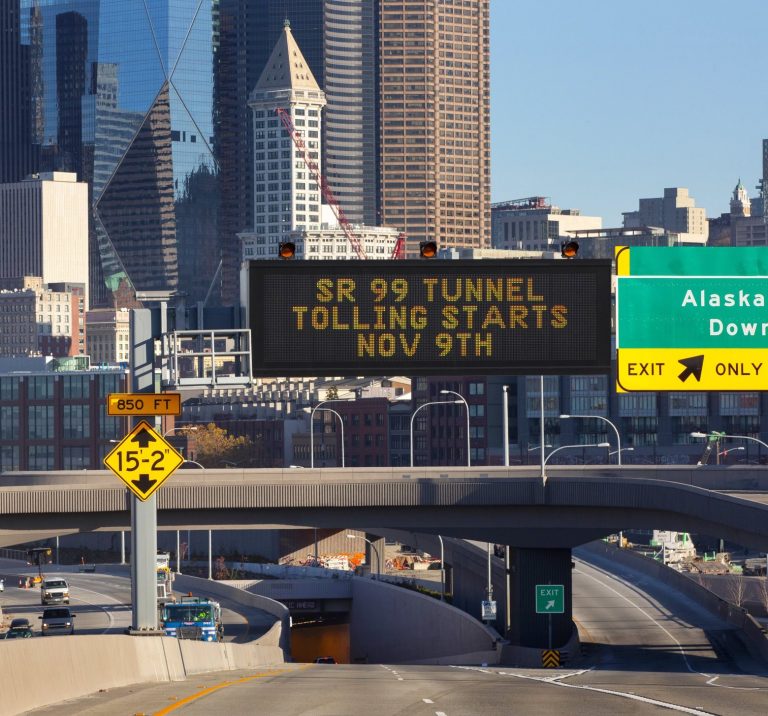Accounting for a full 20% of traffic deaths in Seattle is Aurora Avenue North, aka State Highway 99, Seattle’s north-south alternative to Interstate 5, according to Elisabeth Wooton, Seattle Department of Transportation senior capital projects coordinator.
This major arterial is known as the city’s High Injury Network; many drivers speed down the not-very-pedestrian-friendly highway. A skinny concrete median is the only thing separating wide northbound and southbound lanes. But it’s more than a highway; it’s also a busy commercial route with lots of foot traffic associated with local businesses and restaurants in some parts.
And that’s a big part of the problem: A highway with foot traffic and minimal protections for pedestrians has meant deaths have been scattered along the route, from Westlake north to just past Bitter Lake. “In terms of reaching our Vision Zero goals and providing safety, Aurora is critical,” said Wooton.
Vision Zero is the city’s plan to end all traffic deaths and serious injuries by 2030.
Anne Vernez Moudon, University of Washington urban design and planning professor emeritus, has studied pedestrian safety for 25 years. She explains that a majority of Seattle traffic deaths are on or around arterial roads like Aurora, where cars go faster and there are fewer pedestrian crossings.
Moudon says one dataset explains the danger: The chances of a person dying when hit by a car going 20 mph is 5%. At 30 mph, it’s 45% and at 40 mph, chances of death are 85%. If struck at 50 mph, there is a 100% chance of death for pedestrians, she said.
In Seattle, pedestrian deaths also rose steadily over the past few years according to the SDOT: 16 in 2019, 14 in 2020, 20 in 2021 and 26 in 2022. McKechnie says key factors include city design, time of day, speeding and distracted driving. Seattle and King County have the most pedestrian traffic deaths in the state, because these deaths are usually closely correlated with population, but the next highest county, Yakima, does not have the next highest population.
“We don’t do enough,” said Moudon, when asked why pedestrian death tolls aren’t decreasing significantly. “You don’t have to deal with the whole city, you can just deal with these areas … these hotspots where a lot of people are walking and the same old problems of speed, lack of safe crossings.”
Continue reading at Crosscut.
